Keynote Speakers
Professor Sergey AFONTSEV
Moscow State University, Russia
MGIMO, Russia

Opportunities and Challenges for Russia’s Long Term Development: Global Context
Priorities of Russia’s long term development strategy (Strategy–2035) are conditioned by both domestic and external factors. The latter are analyzed in the paper on the basis of the ‘Global Forecast – 2035’ published by the Primakov National Research Institute of World Economy and International Relations (IMEMO) in March 2017. Key trends affecting Russia’s position in the world economy are identified as well as major development opportunities and challenges associated with these trends. Measures to strengthen Russia’s development capacities are proposed for alternative scenarios of global GDP growth, global economic governance, regional economic cooperation/integration and (geo)political tensions.
Professor Tommaso AGASISTI
Politecnico di Milano, Italy
Evaluating the Performance and Efficiency of Educational Organizations in an International Perspective –
Concepts, Methods and Examples from Primary, Secondary and Tertiary Education
In this talk, I will give a brief overview of the importance of assessing the performance of educational institutions. In particular, I will focus on evaluating the efficiency of schools and universities as defined as producing the maximum amount of outputs, given the available inputs - within the economic framework of the Educational Production Function (EPF). I will illustrate how production frontier methods are particularly well-suited for the purpose of assessing institutions' efficiency. Also, I will provide some results from my previous and current research devoted to the study of efficiency of educational institutions in a multi-country perspective.
Professor Phillippe BOUQUILLION
Université Paris13, France
The Role of Design in Industrialisation of the Handicraft: the Indian Case
What is the role of design in the transformation of handicrafts in India? We have conducted surveys on textile crafts supervised by non-governmental organization (NGO) in Delhi, Mumbai, Jaipur and in Gujarat, particularly in Ahmedabad and Bhuj area. NGO have introduced since the 1990s deep transformations in craft, in particular by taking into account design. Design is understood here as a set of practices to design products and as a way of rethinking the whole production chain from the conception phases to the valuation ones. NGO strategies are said to articulate economic efficiency and social progress.
Show more
Emphasis will be placed on the modes of rationalization of the production and the strategies of construction of the value of the products.
First, in the cases studied, designers and NGO are not only intermediaries that would link existing supply and demand. But these players through design, can structure the main stages of the industrial process, from creation, upstream to dissemination and the construction of the value, downstream. Image 1 A quasi-industrial process of production is taking place. Costs are reduced. NGO are seeking to produce in series with a constant level of quality, and to control quantities and in a limited time. Designers coordinate the production processes by centralizing the most important decisions and transfer application tasks, risks and costs to craftsmen Design ais lso facilitating the commodification of handicrafts.
Second, design also plays a central role in the construction of the symbolic dimension of handicrafts. To this end, designers present crafts as an artistic creation and craftsmen as being creators. In addition, they insert handicrafts in a sustainable development approach. The raw materials used, manufacturing techniques and conditions of employment and remuneration of labour are supposed to comply with the requirements of sustainable development and craftsmen are supposed to receive stable and sufficient resources.
Thus, craft organized by design would be one of the best defenders of the Indian cultural tradition and of indianity.
Professor Martin CARNOY
Higher School of Economics, Russia
Stanford University, USA

Studying inequality in education: big data and small data approaches
A founding ideal of Western democracies (and even Communist dictatorships) is that merit, not accident of birth, should determine individuals’ social standing. Schools have assumed a major role in judging key elements of merit among young people—namely, academic skills, hard work, self-discipline, and cooperative behavior. When students’ inherent characteristics—such as race, gender, or parents’ economic and social capital— rather than their innate ability, hard work, and discipline systematically affect their school outcomes, this threatens democratic ideals.
Show more
This presentation will review the many ways to study inequality in education in a country, from using school census data that show educational attainment in various regions with different wealth to the distribution of student achievement by schools in localities with varying resources to the mobility of individual students by family background from one level of schooling to the next, to estimating the distribution of individual students’ achievement on a particular test by their family background, to studying distribution of school resources (including teacher skills) among different social class groups in the society, to studying the process of schooling for different groups of students (social class, boys/girls) at the school and classroom level. These studies take us from a high level of aggregation down to the micro level of the classroom and even the family. Some provide insights into the degree of educational inequality, based on students’ social class, gender, and ethnicity, that exists in the school system, and others insights into the process of reproducing educational inequality through the practices of the system.
Professor Marek DABROWSKI
Higher School of Economics, Russia
Bruegel, Brussels, Belgium
Center for Social and Economic Research, Poland

Central Asia - 25 Years after Collapse of the USSR
At the end of 2016, a quarter of century passed since collapse of the former USSR. As result, former Soviet republics, including five republics of Central Asia (Kazakhstan, Kyrgyzstan, Tajikistan, Turkmenistan and Uzbekistan), became the independent states. The purpose of this lecture is an analysis of results of 25 years transformation in the Central Asian region. The analysis takes into consideration various region’s specifics, including its remote geographic location (far from main centers of the world economy), underdevelopment of transport and trade infrastructure, complicated regional geopolitics, political authoritarianism, lack of capitalist traditions, commodity dependence, low urbanization level, high population growth, etc.
Show more
Transformation results differ between individual countries. Kyrgyzstan, Kazakhstan and, to lesser degree, Tajikistan built foundations of market economy and integrated into the global trade system. Kyrgyzstan is the only country, which is politically partly free and pluralistic. On the other end of the regional spectrum, Turkmenistan and Uzbekistan continue the command system and remain partly closed to the external world.
Individual countries have also noticed differences in growth rates and development levels. As result of oil and natural gas boom in 2000s and early 2010s, Kazakhstan and Turkmenistan joined the group of upper-middle-income countries. Recently, Kazakhstan’s GDP per capita in PPP terms caught up with the Russian level. Other three countries have grown in slower pace. Until now, they moved from low-income to lower-middle-income group of countries.
The sharp decline in world commodity prices in mid-2014 exposed limits of the hitherto growth model and increased urgency of structural diversification of Central Asian economies. However, successful market-based diversification will require intensification of economic and institutional reforms, which does not seem a very likely scenario without political liberalization.
CENTRAL ASIA AT TWENTY-FIVE By Uuriintuya Batsaikhan and Marek Dabrowski
Professor Ashwini DESHPANDE
Delhi School of Economics, India
Glass Ceiling or Sticky Floor? Gender Discrimination in Labour Markets
Labour markets all over the world are characterized by large and persistent gender wage gaps. The talk will review the international evidence on whether the gaps have been closing or narrowing over the years, and if the gaps are higher at the higher end of the wage distribution or at the lower end, i.e. are labour markets characterized by a “glass ceiling” or a “sticky floor”. We will examine to what extent the wage gaps might be attributable to gender discrimination, and what the economic consequences of that discrimination might be.
Show more
The talk will also present results of my study (co-authored with Deepti Goel and Shantanu Khanna) that analyses the issue of gender parity in wages by focusing on the evolution of male-female wage gaps for an emerging economy, India, and decomposes the gaps to understand patterns of gender-based labour market discrimination. The study data from a large-scale national data set in order to explore gender wage gaps among regular wage/salaried workers, not only at the mean, but along the entire distribution to see “what happens where”, i.e., assess where in the wage distribution are gaps higher. The study decomposes the gaps into an “explained component” (due to wage earning characteristics), and the unexplained component (due to gender differences in the returns to characteristics in the labour market), which the literature treats as a proxy for labour market discrimination.
Professor Carl F. FEY
Aalto University School of Business, Finland
What Organizational Cultures Work Best in Russia?
Culture and institutional differences between countries affect which organizational cultures work best in a particular country. However, often managers follow the latest global trend without paying enough attention to how the local context where they operate may affect what organizational cultures work best in their local environment. In addition, Multinationals(MNCs) have an additional challenge compared local firms in that they need to balance pressures to create a standard organizational culture globally and adapt to host countries’ national cultures. This presentation will also explore how to best resolve this tension.
Professor Baoli GAO
China Institute of Education, China

Modernization of education in China: theoretical studies and practical efforts
The study of education modernization attracts lots of attention in China. There is a widespread consensus among scholars that education modernization is not only the advanced world level of education development, but also the efforts and the process of catching up with or maintaining the advanced world level. Education modernization is a state of higher level of national education development, which goes beyond the traditional education. The content of education modernization mainly refers to the education idea, the education system, the education policies, the education substance, the education method and the modernization of the governance. Promoting education modernization will enable people to have more opportunities for lifelong learning, will improve the quality of education, will make educational development results more equitable to all the people, will improve significantly educational innovation ability, and will also develop a more mature and well-defined education system. Seven objective indexes- being more secure,being more popular, being more suitable, being fairer, being of higher quality, having a more sound system, having more contributions and being more satisfied with one subjective aim, is considered by some scholars as core targets for education modernization; There are also scholars that design the system of education modernization by five dimensions- popularity and fairness, level and quality, service and contribution, conditions and security, informationization and internationalization; Some scholars suggest that the signs of education modernization should be that the investment, efficiency, quality and equity of education reached the advanced world level. Based on national conditions and traditional culture, We should learn and absorb the concept and experiences of the international education modernization, to build the theory system and practice model of education modernization with Chinese characteristics.
Show more
China promotes education modernization, and it is aimed at fully developing and making full use of the world's largest, most abundant and most valuable human resources to lay a human resource foundation for the grand goal of modernization; supporting national modernization consistently by education modernization ; giving priority to the development of education.
The core of modernization is human modernization. Human modernization requires firstly education modernization. Chinese education promotes human modernization, strives to improve students 'social responsibility to serve the people and the country, and to cultivates students' innovative spirit and practical ability.
China promotes education modernization, considers Education Equality as a basic education policy, so that all people enjoy a more equitable access to education; China improves consistently the quality of education, so that people enjoy education resources of a better quality; China optimizes the educational structure, to meet the needs for talent and intelligence with economic and social development; China efforts to promote the development of educational connotations by deepening the comprehensive education reform and improving constantly the educational system.
Professor Evsey GURVICH
Economic Expert Group

Macroeconomic and Structural Properties of the Russian Labor Market
The lecture presents overview of the recent studies carried out by a team of Russian researchers. Comparative cross-country analysis of base macroeconomic models reveal key salient features of the Russian labor market (RLM). The strength of most relations in the RLM is typical for emerging markets. The only characteristic which sharply distinguishes RLM from other countries is flexibility of real wages by unemployment rate.
Important structural properties of the RLM include, first, significant interrelation of wages in the public and private sectors, and second, negative impact of pulic employment on the number of people employed in the private sector, and more than that, positive effect of public employment on the unemployment rate.
Our findings reveal thus macroeconomic mechanisms underlying typical patterns of the RLM adjustment. I argue that the concept of the RLM model should be somewhat revised: its salient feature is lack of macro rigidities – hence it is efficient rather than faulty.
Once the RLM demonstrates high ability for adjustment to shocks, there is no case for fiscal and monetary stimulus. Our analysis gives also explanation to a unique feature of RLM: steady increase in the wage share over the last decade, that ran contrary to the global trend.Professor Ronald F. INGLEHART
University of Michigan, USA
Trump and the Xenophobic Populist Parties: Cultural Backlash and Declining Real Income
People’s values and behavior are shaped by the degree to which survival is secure. For most of the time since humans first appeared, survival has been precarious and societies emphasized strong in-group solidarity, rejection of outsiders, conformity to group norms, and obedience to strong leaders. For under extreme scarcity, xenophobia is realistic: if there is just enough land to support one tribe and another tribe tries to claim it, survival may literally be a choice between Us and Them. Under these conditions, a successful survival strategy is for the tribe to close ranks behind a strong leader, forming a united front against outsiders—a syndrome that can be called the Authoritarian Reflex. Conversely, high levels of existential security open the way for greater individual autonomy and more openness to diversity, change, and new ideas.
Show more
For 35 years following World War II, unprecedented prosperity and extensive welfare states brought a shift toward Self-expression values, rising gender equality and democratization. Fueled by subsequent decades of declining real income and rising income inequality, the Authoritarian Reflex is currently bringing a resurgence of xenophobic and authoritarian populist movements in many countries, from France’s National Front, to the surge of support for Great Britain’s exit from the European Union, to the rise of Donald Trump.
Professor Maarten C. JANSSEN
University of Vienna, Austria
Higher School of Economics
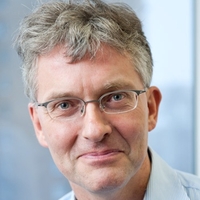
Recent developments in Telecom Auctions
The objective many telecom regulators want to achieve when they decide to auction spectrum is that spectrum is allocated efficiently and that acquiring firms pay a market price. The traditional simultaneous multi-round auction (SMRA) may fail in this respect, as it provides bidders with an opportunity to engage in strategic demand reduction. However, we will argue that the recently proposed and used combinatorial clock auction (CCA) does not fare better in this respect if bidders have only the slightest preference to raise rivals’ cost. The CCA provides bidders with opportunities to engage in strategic demand expansion without running the risk of obtaining spectrum they do not want to acquire.
Carlos Felipe JARAMILLO
Macroeconomics & Fiscal Management, The World Bank

Making Inclusive Growth Work: Challenges and Opportunities
The global environment remains fragile and continued weakness in systemically large economies, expected tighter global liquidity conditions, and political uncertainty pose downside risks. An extended period of global risk aversion could set back global growth. Under such a scenario, those emerging markets with pre-existing vulnerabilities would likely be most affected. The presentation will highlight current economic developments, expose challenges to sustainable growth and highlight structural reforms most conducive to supporting long-term growth.
Professor Hubert KEMPF
Ecole Normale Superieure de Cachan, France
Public Debt Sustainability and Defaults
A sovereign default in a stochastic macroeconomic model with infinite horizon and the presence of a debt recovery rule is addressed . Sovereign default is analyzed as a market event, when the fiscal authority does not find on the market the funds necessary to meet its financial obligations. We prove the existence of a default threshold dependent on the pricing of public debt and thus on the debt recovery rule. Except in a specific case, this threshold is lower than the traditional solvency ratio. We then offer a new framework for the assessment of public debt sustainability. A public debt is said to be “gamma-sustainable" at date t when its trajectory does not reach the default threshold at any future date, assuming that there is no realization of the gross rate of growth lower than gamma which is smaller than 1. It is said to be “gamma-unsustainable" at date t when its trajectory reaches the default threshold at some finite date, assuming that there is no realization of the gross rate of growth higher than gamma which is higher than 1. When it is neither “gamma’-sustainable", nor “gamma"-unsustainable", with gamma’ < 1 < gamma", it is in a zone of financial fragility. When a sovereign default occurs, a too large recovery ratio (or equivalently a too small haircut) is not able to insure the sustainability of the post-default debt.
Professor Brian McCALL
University of Michigan, USA
How Can We Increase Educational Attainment?
This lecture will discuss some recent research by myself and others that has been concerned with estimating the causal effect of certain interventions designed to increase educational attainment. One possible policy intervention that has received considerable attention in the United States is to lower or eliminate tuition for community colleges. Several state or regional based programs currently exist that either eliminate or substantially lower tuition for community college. I will discuss researchers attempts to identify the causal effects of these programs on different educational outcomes. I will also discuss research that has estimated the causal effect of programs that try to keep youth in school beyond compulsory education by paying them to attend.
Professor Mohsen NAGHAVI
University of Washington, USA
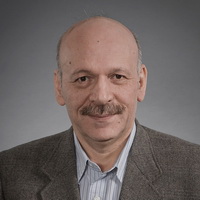
Burden of Disease in Russia, 1990-2015: a Systematic Analysis for the Global Burden of Disease Study 2015
Results from the Global Burden of Diseases, Injuries, and Risk Factors Study 2015 (GBD) were utilized to evaluate trends in mortality and causes of death in Russia from 1990 to 2015. The GBD 2015 study is a worldwide collaborative effort that analyzes the most up-to-date and accurate information, through advanced and transparent methods, in order to measure the impact of health conditions. For the period of 1990 to 2015, trends in life expectancy, sources of mortality, and contribution of major risk factors in Russia were compared against patterns of change in seven similar countries: China, Finland, Germany, Japan, Kazakhstan, Ukraine, and the United States. Health progress was further evaluated by developing a novel metric we refer to as the Socio-demographic Index (SDI). The SDI incorporates lag-dependent income per capita, total fertility rate for the population, and the average educational attainment in the population over 15 years of age.
Show more
Each component is scaled from zero – the lowest value observed across all geographies and time periods considered – and one, the highest value observed. The final SDI value is the geometric mean of equally weighted components. The SDI score for Russia as calculated for GBD 2015 was 0.86; among the countries selected for comparison, the SDI was 0.68 in China, 0.81 in both Kazakhstan and Ukraine, 0.89 in Finland, 0.90 in both Japan and Germany, and 0.93 in the United States.
In the past decade Russia has seen a steady improvement in life expectancy, as well as considerable reductions in mortality across a number of causes of death. There were marked improvements in child mortality between 2000 and 2015, with an 55.0% (53.7-56.9%) decrease. Progress was also seen through decreases in neonatal disorders and deaths, and notable reductions in maternal disorders and deaths. However, compared to countries at similar levels of development, mortality rates in Russia are high and life expectancy is low. Overall, the greatest number and highest rates of mortality were due to cardiovascular disease. Cardiovascular disease accounted for 57.5% (56.8-58.2%) of total mortality in 2015. Further, Russian men have a disproportionate burden over women, having a higher risk of premature death at younger ages associated with behavioral risk factors. Trends in mortality over this period are significantly related to patterns of alcohol consumption, drug use, smoking, metabolic risk factors, and changes in health care capacity and access. Although there have been recent declines in mortality, death rates due to alcohol and drug use are higher in Russia than for other countries at similar levels of development.
Russia has made improvements in its overall mortality and life expectancy over the past 25 years; however, alcohol and drug abuse continues to be a primary cause of premature morality. These factors can be mitigated through preventive health care and national policy, and therefore present a direction for future health care system improvements.
Professor Vadim RADAEV
Higher School of Economics
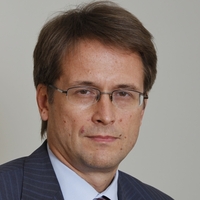
The evolution of illegal alcohol markets in Russia since the late socialist period
Illegal markets involving illicit products and transactions have been largely ignored by the scholars, despite their significance in various economies. There is a lack of conceptual categorization and scarcity of reliable data. The study examines the structure and evolution of heterogeneous illegal markets in Russia with a special emphasis on markets of homemade alcohol, counterfeit alcohol, and illegally manufactured alcohol. A variety of statistical sources and survey data is used to demonstrate that the compositions of these markets have come through four different stages since late socialism, depending on the constellation of political, legislative and economic factors. At each stage, some of these markets prevail, whereas others remain undeveloped. Overall, illegal alcohol markets tend to grow in periods of exogenous political or economic shocks and shrink in periods of economic growth. Changes in the structure of illegal markets are backed by a continuous requalification of products, organizations and transactions contesting the boundaries between legality and illegality. Some illegal activities retain their legitimacy due to the ignorance or tolerance of enforcement agencies and final consumers. Boundaries between legitimate and illegitimate activities are blurred and move slowly.
Andreas SCHLEICHER
OECD/ Directorate of Education and Skills
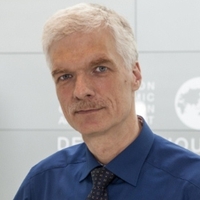
Prior to the industrial revolution, neither education nor technology mattered much for most people. But when technology raced ahead of education in those times, many were left behind, causing unimaginable social pain. It took a century for public policy to respond with the ambition of providing every child with access to schooling. That goal remains still beyond the reach of some, but meanwhile the stakes have risen well beyond providing more of the same education: Through the digital revolution, technology is once again racing ahead of education and those without the right knowledge and skills are struggling.
Show more
Digitalisation is connecting people, cities, countries and continents; bringing together a majority of the world’s population in ways that vastly increases our individual and collective potential. But the same forces have made the world also more volatile, more complex, and more uncertain. The rolling processes of automation, hollowing out jobs, particularly for routine tasks, have radically altered the nature of work. For those with the right knowledge and skills, this is liberating and exciting. But for those who are insufficiently prepared, it can mean joblessness or the scourge of vulnerable and insecure work: zero hours contracts without benefits, insurance, pension or prospects. What are the knowledge, skills and character qualities that can help people to succeed in this world? And how can education systems help develop these? Equally important, how can education nurture the kind of binding social capital that will help build common ground among people with diverse experiences and interests, and through which people can increase their radius of trust to strangers and institutions. These are the questions the presentation will review.
Professor Arunava SEN
Indian Statistical Institute, India

Strategy-proof Random Social Choice Functions on Voting Domains
The talk will review existing results and present some new ones relating to the following question: on what voting domains can every random strategy-proof social choice functions satisfying unanimity, be expressed as a fixed probability distribution over strategy-proof deterministic social choice functions satisfying unanimity? Answers to this question are important for understanding the extra possibilities for truthful information revelation, introduced by the consideration of random mechanisms.
Prof. Dr. Dr. h.c. mult., Hermann SIMON
Simon-Kucher & Partners Strategy& Marketing Consultants, Germany

Hidden Champions – The Vanguard of Globalia
Global exports are growing faster than national gross domestic products. Globalia, the globalized world of the future, offers unlimited growth opportunities. Performance differences between countries are staggering. Among the larger countries Germany is a distant top-performer in per capita exports. This is not due to its large corporations but to the prevalence of mid-sized, little known world market leaders, the so-called Hidden Champions. Germany has far more of these firms than any other country.
Show more
The Hidden Champions
- have extremely ambitious goals,
- focus on narrow markets combined with global selling and marketing,
- are very close to their customers and extreme innovators,
- their leadership is long-term oriented and grants employees great latitude in execution which in turn creates high motivation and low turnover.
Countries and companies of all types can learn from these unknown role models.
Professor Milan SVOLIK
USA
When Polarization Trumps Civic Virtue: Partisan Conflict and the Subversion of Democracy by Incumbents
There is a novel explanation for the most prevalent form of democratic breakdown after the end of the Cold War: the subversion of democracy by incumbents. In the classics of democratization research as well as in mainstream democracy promotion practice, the public's disapproval is assumed to serve as a check on incumbents' temptations to subvert democracy. We explain why this check fails in polarized societies. In the latter, voters have a strong preference for their favorite candidate, which makes it costly for them to punish an incumbent by voting for a challenger. Incumbents exploit this lack of credible punishment by manipulating the democratic process in their favor. Combining data from cross-national surveys and a survey experiment from Venezuela, we show that voters in polarized societies indeed tolerate more electoral manipulation -- as long it benefits their favorite candidate or party. These findings provide a new answer to a fundamental question about the survival of democracy: When can we reasonably expect the public to serve as a check on the authoritarian temptations of elected politicians?
Professor Daya THUSSU
University of Westminster, UK

Creative Industries in BRICS Nations and Glocalization of Content
There is a growing visibility and influence of media emanating from the BRICS (Brazil, Russia, India, China and South Africa) nations. How these might affect the global creative and cultural industries? While acknowledging the fact that in terms of volume and value global creative industries continue to be dominated by the West, with the US at its core, the paper suggests that in a dynamic and digitized 24/7 globalized multi-media age, the one-way vertical flow of media products –from the West to the Rest - has given way to multiple and horizontal flows, in which the BRICS countries play a key role. Brazil’s media industry has been a major exporter in certain genres such as telenovelas for decades.
Show more
The Chinese government has taken the commanding role in promoting the country’s soft power to supplement its hard economic prowess, as the world’s second largest economy, evident in the government’s extensive investment in international broadcasting, part of the so-called ‘going out’ initiative. India’s privately-owned bourgeoning creative industries – it is home to the world’s largest film industry, as well as a hub for the global IT industry - has become an important source of media products. RT has emerged a major voice of countering Western news narratives, while the Russian-language internet - ‘Runet’ - has demonstrated exceptional growth. South Africa is a major player in the African media sphere, mirrored in its creative industries, notably the digital satellite television platform Multichoice, owned by the media conglomerate Naspers, which has a large footprint across the continent.
Despite many internal differences and complex external affiliations, the BRICS group shares their non-Euro-Atlantic origins as well as their calls to redress power imbalances in existing international institutions and structures. However, are the creative industries from the BRICS nations eroding US hegemony or reconfiguring it through glocalizing content mostly originated in the US-based media giants or their local subsidiaries? The glocalization of BRICS creative industries is likely to expand, the paper suggests, with the growing convergence of mobile communications technologies and content via a multi-lingual internet. What implications will such digital connectivity have for global media flows, Soft Power discourses and broader communication agendas?
Professor Natalia VOLCHKOVA
New Economic School
Centre for Economic and Financial Research
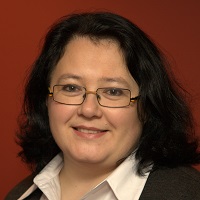
Costs of Exporting: Evidence from Russia
The approach of heterogeneous exporting firms is a mainstream of empirical and theoretical research in modern international trade. Firm’s heterogeneity defines extra channels through which trade liberalization affects the effectiveness and competitiveness of the open economy. Besides, firms’ heterogeneity emphasize the role of foreign market access costs not only for trade flows but also for the variety and prices of domestic goods sold to domestic consumers. In this presentation, I will survey empirical studies of Russian manufacturing exporting firms in the framework of heterogeneous firms’ models. The comparison of these results with the corresponding studies performed in other countries along with other direct and indirect evidence point out on very high costs of exporting faced by Russian firms. I will also survey studies that analyze the factors behind high costs of exporting.
Professor Christian WELZEL
Leuphana University Lueneburg, Germany
Higher School of Economics

The Myth of Deconsolidation: Rising Liberalism and the Populist Reaction in Mature Democracies
In two widely-read articles, Foa and Mounk (2016; 2017) come to the alarming conclusion that support for democracy is in a rapid generational decline. A remarkable point about this diagnosis is its emphasis on the millenial generation’s fading support for democracy and the claim that democratic support is steeply eroding in even the most mature democracies. Foa and Mounk link their evidence to the recent success of right-wing populism, implying that the seeming generational erosion of democratic support has increased the size of the right-wing populist electorates in mature democracies. In conclusion, Foa and Mounk suggest that democracy itself might be in danger, including places where it seemed safest over many generations.
Show more
Since decades, political science experiences a recurent ebb and flow in the “crisis of democracy” rhetoric. The crisis rhetoric reached a first peak in the aftermath of the flower power movement of the late 1960s when conservative writers like Crozier, Huntington and Watanuki (1974) criticized the student revolts as causing a “governability crisis.” Another peak appeared in the early 2000s when the influential work of Putnam (2000) stated the rise of a “post-civic” generation whose march to power will erode the social capital from which democracy feeds itself. Despite the fact that post-war democracies weathered these and other problems, alarmist messages continue to find an applauding audience. As the burgeoning literature on authoritarian backsliding documents, we face today another high tide of the “democracy in crisis” rhetoric (cf. Walker 2016). Foa and Mounk’s recent articles join in this choir, providing seemingly sensational evidence in support of its alerting tone.
We question these findings and their alarmist conclusions on a number of accounts. To begin with, Foa and Mounk overstate the age differences in democratic support: these differences occur on such a high base-level that the somewhat lower support among younger people is far from representing a dramatic drop.
Second, and more importantly, the obvious age pattern in some indicators of political disaffection has little generational to it but is mostly a lifecycle effect: younger people showed stronger signs of disaffection already in earlier decades, but this age pattern is not linked to a clear temporal trend towards increasing disaffection in the electorates of mature democracies.
Third, Foa and Mounk overlook that support ratings for democracy are largely incomparable across birth cohorts. The reason is that the moral values on which people base their democratic support have turned markedly more liberal over the generations. As a consequence, support for democracy has changed its meaning over the generations: among older birth cohorts, conservative support for democracy is prevalent; among younger cohorts, liberal support for democracy has replaced the conservative one. In accordance with this cohort pattern, liberal support for democracy has also grown over time, and quite pronouncedly so.
Fourth, key concomitants of support for democracy at the system level depend critically on the type of support that prevails. Specifically, the extent of conservative support for democracy in a country associates closely with deficient democracy, including its outright absence. By contrast, the prevalence of liberal support is tightly linked to genuine, well performing democracy. Without further qualifications for the values in which it is rooted, support for democracy as such is hiding more than it reveals.
Finally, defining the right-wing populist electorate as those voter segments who combine a pronounced disaffection from public institutions with conservative moral values, we demonstrate that this electorate has visibly decreased over recent decades, at the same time as its members have become socially and ideologically more distinct (“left behind”) from an increasingly liberal mainstream in their societies.
In conclusion, the recent success of right-wing populist parties neither indicates an increased voter potential for these parties, nor does it signal fading civic qualities among the publics of mature democracies. Instead, the right-wing populist electorate is now easier to address and to mobilize, precisely because it has become smaller and more distinct. The greater visibility of right-wing populism does not revert or disprove the progressive value change of recent decades but illustrates a grown polarization over morally conservative-vs.-liberal values—as a consequence of the progressive cultural shift.
.jpg)
.jpg)
.jpg)
.jpg)
.jpg)
.jpg)
.jpg)
.jpg)